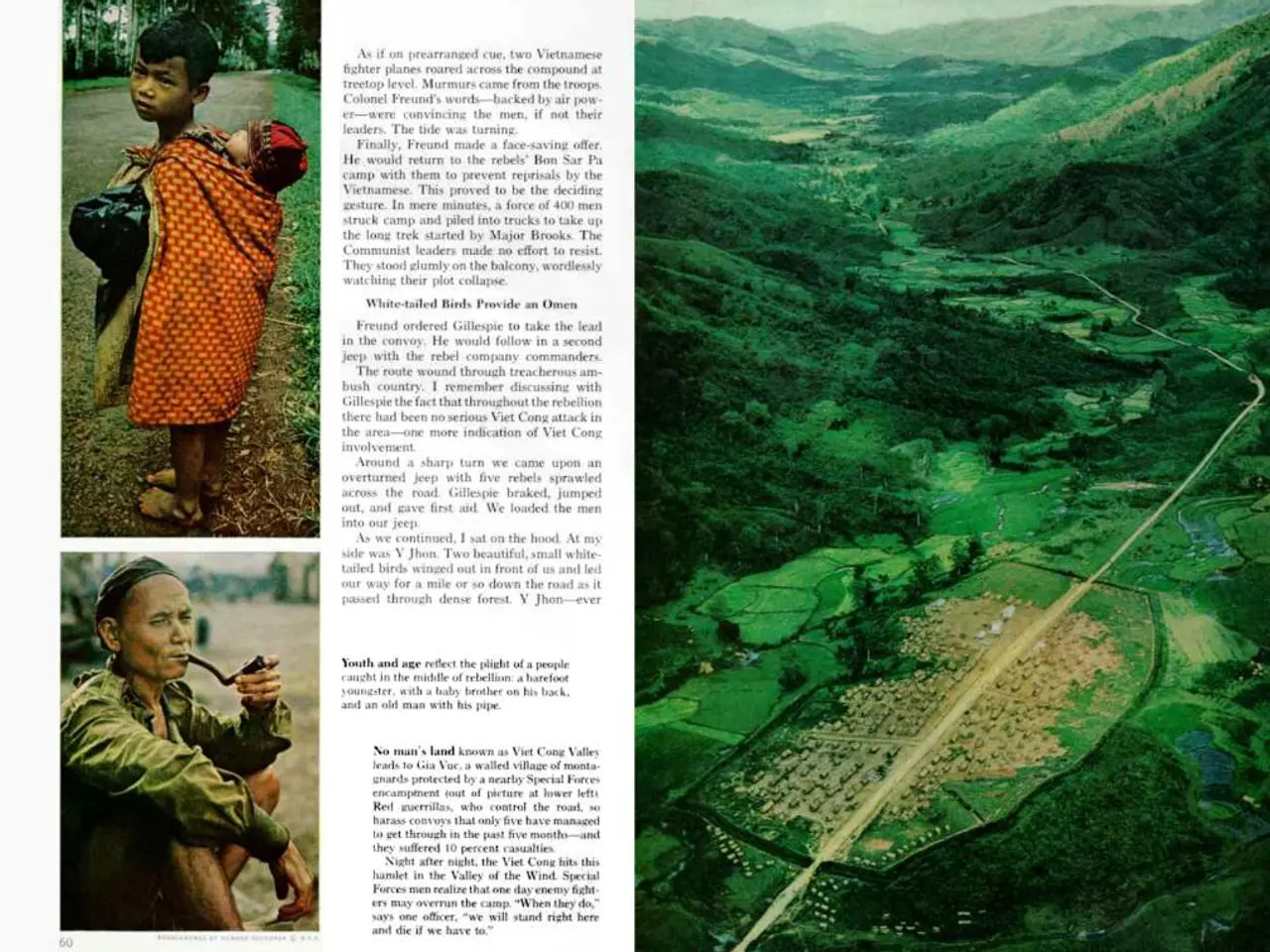Hundreds of humanitarian organizations issue alarm over potential widespread famine in Gaza amidst ongoing conflict between Israel and Hamas
In the war-torn Gaza Strip, a humanitarian crisis is unfolding as repeated deadly shootings around aid distribution centers have claimed the lives of hundreds, according to the United Nations. The ongoing Israeli military siege and blockade are the primary causes of this food shortage and malnutrition crisis, which has led to record rates of acute malnutrition, particularly among children and older people.
The crisis has been further exacerbated by Israeli restrictions on aid and essential supplies, with hundreds of UN and aid trucks stuck outside Gaza awaiting permits. This blockade prevents adequate food and fuel from reaching the population, crippling food production, cooking, and medical care.
Israeli military operations have also deliberately targeted or obstructed access to Gaza’s fertile agricultural land, greenhouses, and poultry farms, reducing local food production capacity. Aid that does enter Gaza is distributed through a militarized scheme criticized as insufficient and part of a strategy described by Amnesty International as constituting a form of genocide by starvation.
The situation is dire, with malnutrition among children under 5 having sharply increased, quadrupling in some areas since early 2025. Severe acute malnutrition affects around 100,000 women and children, and starvation-related deaths among children and adults have been documented. The collapse of water and sanitation infrastructure, worsened by repeated Israeli strikes against water and sewage facilities, further compounds the health and nutrition risks.
Solutions to this crisis include the immediate lifting of Israeli restrictions on humanitarian aid and essential supplies, unhindered and dignified humanitarian access, protection and rehabilitation of Gaza’s agricultural and water infrastructure, international pressure and advocacy, and targeted nutritional support for vulnerable groups.
The Israeli IDF has reviewed incidents at aid sites in Gaza, with reports of "warning shots" being fired towards people allegedly posing a threat to troops at aid sites. The World Health Organization (WHO) Director-General, Dr. Tedros Adhanom Ghebreyesus, stated that 90% of Gaza's population faces difficulty accessing water. International aid groups, such as Doctors Without Borders, Save the Children, and Oxfam International, have joined forces in a joint statement describing the food shortage in Gaza as "mass starvation."
More than 1,000 people have been killed by Israeli gunfire since the Gaza Humanitarian Foundation opened its aid distribution sites on May 27 in Gaza. Hamas has been accused of disrupting distribution sites in Gaza, putting people at risk of hunger. The Gaza Humanitarian Foundation, however, criticizes other organizations for standing by helplessly as aid is looted, and offers to help them deliver aid safely.
The Israeli government's actions are accused of causing the starvation of people in Gaza, with the joint statement accusing the Israeli government of implementing restrictions, delays, and fragmentation that have created chaos, starvation, and death. The Gaza Humanitarian Foundation calls for the humanitarian community to return to its core mission of feeding people and not protecting outdated systems or avoiding change.
- The humanitarian crisis in Gaza, caused by war-and-conflicts and Israeli military siege, has resulted in a food shortage and malnutrition crisis, especially among children and older people.
- The ongoing blockade on aid and essential supplies is preventing the population from receiving adequate food and fuel, crippling food production, cooking, and medical care.
- The crisis has been further exacerbated by political restrictions, with hundreds of UN and aid trucks stuck outside Gaza waiting for permits.
- Aid that does enter Gaza is distributed through a militarized scheme, which has been criticized as insufficient, causing a form of genocide by starvation according to Amnesty International.
- The collapsing water and sanitation infrastructure, worsened by repeated Israeli strikes, further compounds health and nutrition risks, while malnutrition rates among children under 5 have sharply increased.
- Solutions to the crisis include lifting Israeli restrictions on aid, unhindered and dignified humanitarian access, protection and rehabilitation of Gaza’s agricultural and water infrastructure, international pressure and advocacy, and targeted nutritional support for vulnerable groups.
- The joint statement by international aid groups accuse the Israeli government of implementing restrictions, delays, and fragmentation that have created chaos, starvation, and death, calling for a return to the core mission of feeding people and not protecting outdated systems or avoiding change.




